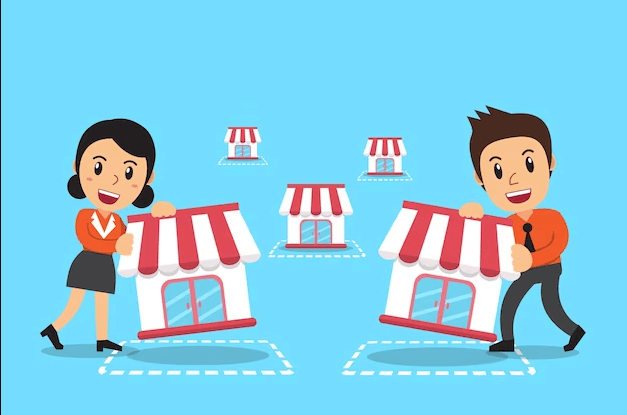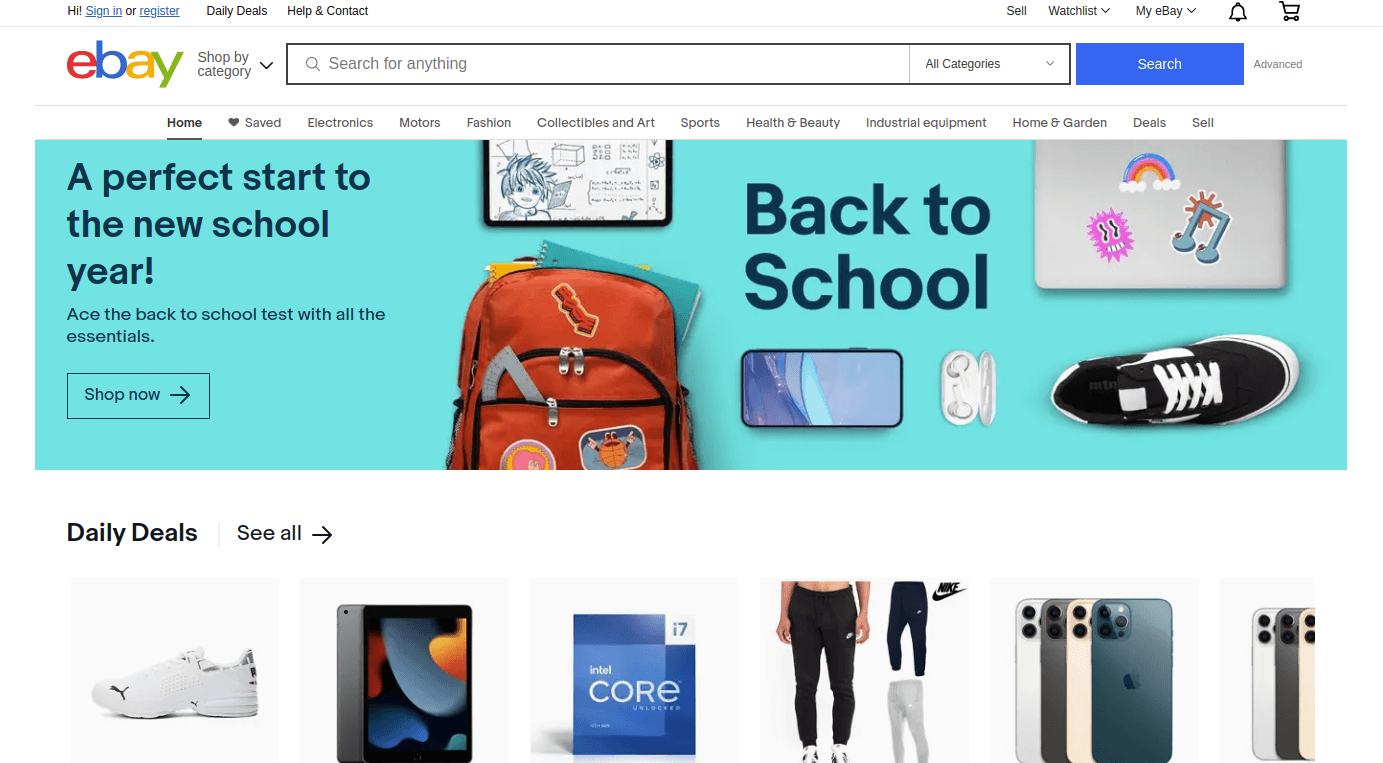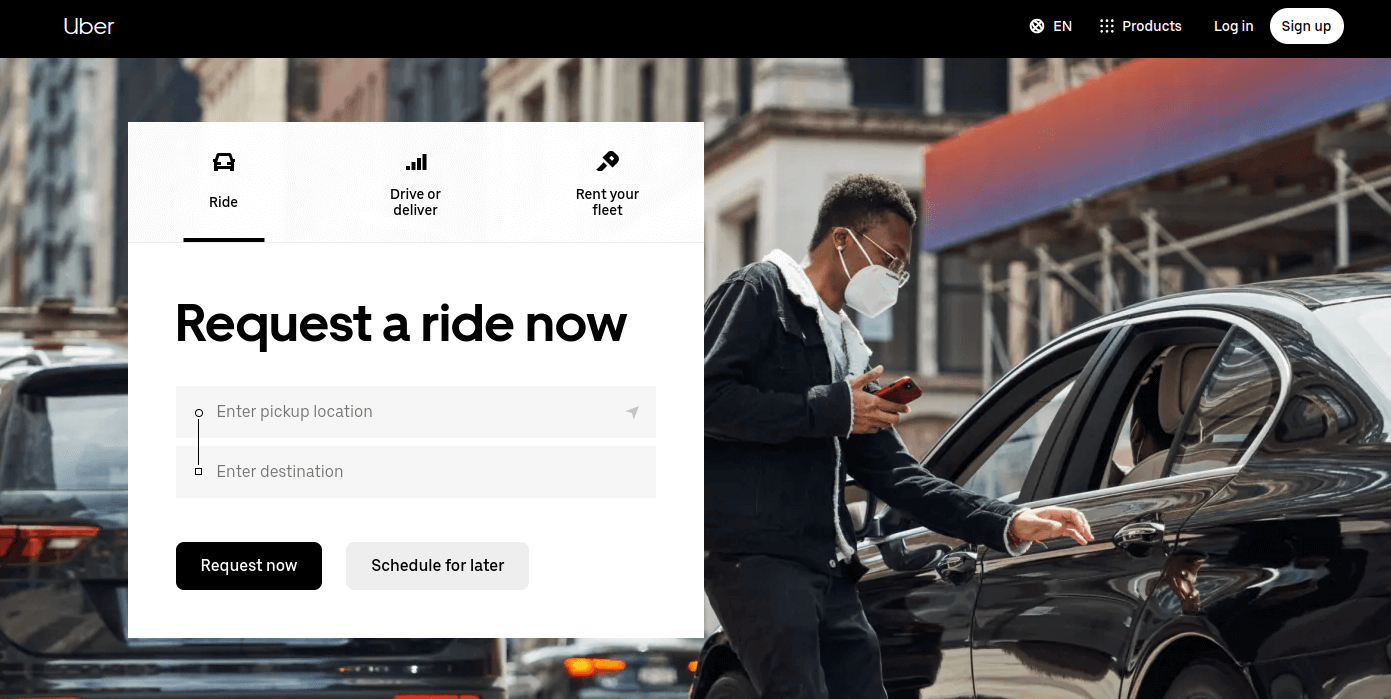The traditional business owners are looking for various resources to get their business to the next step.
One such resource is this article which has a detailed description of what is a two-sided marketplace and how it could be utilized more efficiently to upgrade.
You’ll get to piece together all the information regarding the two-sided marketplace, the market condition, the step-by-step guide to start a two-sided marketplace business.
We even threw you top-secret information on the cost of developing a two-sided marketplace. We assure you that this business model is like winning a lottery, especially during this pandemic time, where people want everything in just one click.
What is a two-sided marketplace?
The two-sided marketplace (aka multi-sided platform, multi-sided network, or multi-sided markets) is the connecting place between both the buyers and sellers of the products or services under one roof.
What is so special about the two-sided marketplace? → Read the next section to know why any businessman or aspiring business owner must be thinking of starting an online marketplace.
How two-sided marketplaces created a digital revolution?
The two-sided marketplace business has substantially changed the course of action for the business world.
As we already discussed, people want everything at their fingertips, it’s extremely sensible and practical to heed to the needs of the end-users.
PwC (PricewaterhouseCoopers) has estimated a global revenue hike of $335 billion or more, by the year 2025 for the sharing economy-based business.
Standard & Poor’s 500 Index has declared that the two-sided marketplace business has seen a 330% growth in the past decade and it’s not planning to stop anytime soon.
Hope these are enough reasons to contempt why you should be considering a two-sided marketplace business!
What is the most effective method to build a two-sided marketplace?
Let’s get aware before starting any two-sided marketplace. The content below explains the 4 core steps to build the right kind of marketplace for your business.
Step 1: Deciding on the business model
The two-sided marketplace app requires a business model to adhere to. The aggregator model is widely practiced when it comes to building an online marketplace for your business.
The aggregator business model serves as a connector between the people who are in need of products or services and the people who are able to give the products or services.
Step 2: Narrowing down the revenue model
When there is a business model to start a marketplace business. It is essential to finalize a revenue model. The commission-based revenue model complements the aggregator business model.
The earnings are collected from the people who are availing of the product or service and the income is distributed to the product or service providers.
As the admin of the marketplace, you’ll be getting a commission for a particular booking.
Step 3: Choosing the right features for your marketplace business
Market research and meticulous competitor analysis are the few ways to help you understand what kind of features you will need for your marketplace business.
If you are planning on starting a rental business – make sure you have legit listings (postings) in your two-sided marketplace startup.
If you are planning to start a taxi booking or delivery-based marketplace – be definitive on having strong features.
What is the cost of developing a two-sided marketplace?
The most asked question on creating a marketplace is the cost of development. We are unraveling the secret that most people withhold.
If you are planning to develop a two-sided marketplace app from scratch it is going to cost you a heap load of money. Usually, the developers charge from $20,000 – $70,000. (Phew! That’s a lot of money)
But if you prefer the ready-made solutions it’ll cost around $5000 (including the white labeling charges) with all the latest features, built using the latest technology, and $25 per hour labor cost on other discussed features.
Best two-sided marketplace examples
Let’s get to know a few examples that might jog your memory as to how successful your business would get!
eBay
Since its inception in 1995, eBay has emerged as an iconic online marketplace, reshaping the way individuals buy and sell goods across the digital landscape. With its user-friendly interface and vast global reach, eBay has transcended geographical boundaries, connecting buyers and sellers in a virtual marketplace that caters to an astonishing array of products.
At its core, eBay operates on the principles of auction-style and fixed-price listings, providing sellers the flexibility to choose between traditional bidding formats and direct purchase options.
This unique blend empowers sellers to adapt their strategies to suit the demands of their merchandise, fostering a diverse marketplace that ranges from rare collectibles and vintage items to brand-new electronics and fashion staples.
Furthermore, eBay has evolved beyond its original concept to incorporate various specialized platforms, such as eBay Motors for automotive enthusiasts and eBay Fashion for style-conscious shoppers.
The platform’s user feedback and rating system create a sense of accountability, ensuring a transparent and trustworthy environment for both buyers and sellers.
Over the years, eBay has embraced technological advancements, embracing mobile applications and offering secure payment options to enhance user convenience.
Its partnerships and collaborations have further extended its influence, enabling retailers and entrepreneurs to tap into a vast customer base.
As an integral player in e-commerce, eBay continues to redefine the online shopping experience, blending the thrill of discovery with the ease of digital transactions. Its enduring presence testifies to its capacity to adapt, innovate, and connect a global community of buyers and sellers in a dynamic online marketplace.
Airbnb
Airbnb, a pioneering platform in the realm of hospitality and travel, has revolutionized the way individuals explore and experience destinations across the globe.
Established in 2008, this innovative marketplace enables hosts to offer a wide array of accommodations, ranging from cozy apartments and charming cottages to lavish villas and unique treehouses.
What sets Airbnb apart is its focus on fostering meaningful connections between hosts and guests, creating a dynamic community that transcends traditional lodging.
At the heart of Airbnb’s success lies its commitment to delivering authentic, immersive experiences. Travelers are not merely tourists but active participants in the culture and lifestyle of their chosen destinations.
The platform’s Experiences feature adds another layer of engagement, allowing locals to curate one-of-a-kind activities and workshops that showcase the essence of their cities.
Moreover, Airbnb has significantly impacted the sharing economy by empowering individuals to monetize their spaces and talents.
Hosts can generate supplementary income by sharing their homes or expertise, while guests relish the opportunity to savor personalized stays and interact with hosts who often serve as enthusiastic guides.
Intriguingly, Airbnb has transcended its role as a mere booking platform to become a global movement, sparking conversations about sustainable tourism, hospitality innovation, and the interconnectedness of cultures.
As it continues to evolve, Airbnb remains a compelling symbol of the modern traveler’s desire for genuine, enriching experiences.
Uber
Launched in 2010, Uber has become synonymous with a transformative shift in the transportation industry, pioneering the concept of ride-sharing that has revolutionized how people move around cities worldwide.
This innovative platform seamlessly connects passengers with drivers, offering a convenient, efficient, and tech-driven alternative to traditional taxis.
At its core, Uber’s user-friendly app empowers riders to request rides at the touch of a button, while drivers can conveniently access potential fares and navigate routes with real-time GPS guidance.
This dynamic approach to transportation has not only optimized the way people commute but has also introduced economic opportunities for individuals seeking flexible work arrangements.
Uber’s success hinges on its commitment to safety, transparency, and user experience. The platform rigorously screens and monitors drivers, and passengers have the advantage of tracking their rides, sharing trip details with loved ones, and providing feedback to maintain service quality.
Beyond ride-sharing, Uber has expanded its offerings to include food delivery services through Uber Eats.
This diversification leverages the same technological prowess to satisfy culinary cravings while bolstering local restaurants’ visibility and revenue.
However, Uber’s journey hasn’t been without challenges. Regulatory and legal hurdles, as well as concerns regarding labor rights and competition, have prompted discussions about the gig economy’s implications and the changing nature of work.
Nonetheless, Uber’s impact on urban mobility is undeniable. It has ignited conversations about car ownership, sustainability, and the potential for innovative solutions to address transportation gaps.
As it continues to evolve and adapt, Uber remains a central player in the ongoing narrative of urban transportation transformation, shaping the way we navigate and experience our cities.
Conclusion
If you’re interested in starting a marketplace similar to the above products, check out our Uber clone page to kickstart your entrepreneurial journey.
We can assist your dual-sided marketplace, enhancing your website’s revenue potential.




